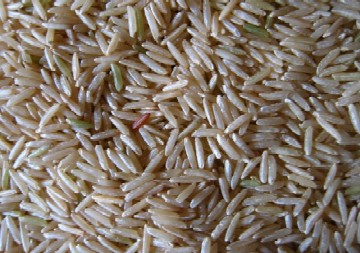Molecular switch that turn off genes in rice identified
 Washington, April 10 : University of Delaware researchers have announced the discovery of a “micro-switch” which can turn off genes in rice, the primary source of food for more than half the world’s population.
Washington, April 10 : University of Delaware researchers have announced the discovery of a “micro-switch” which can turn off genes in rice, the primary source of food for more than half the world’s population.
The researchers say that the novel molecules called natural antisense microRNAs (nat-miRNAs) are composed of short lengths of ribonucleic acids (RNAs).
They say that these molecules target the genes sitting directly across from them on the opposite strand of DNA in a rice cell.
In their research paper, the investigators write that studied similar to theirs may enable scientists to uncover similar gene regulators in humans also.
“We were using a deep-sequencing approach to identify new microRNAs when we found these novel examples,” said Pamela Green, the Crawford Greenewalt Chair of Plant Sciences at the university.
“These tiny RNA molecules are a special type of microRNA that have an anti-sense configuration relative to their targets. It's an exciting finding. We believe they could be present in many organisms,” she added.
The research team used a high-throughput gene-sequencing technique known as Massively Parallel Signature Sequencing (MPSS) to analyze over 4 million small RNAs from six rice samples.
Their work yielded 24 new microRNAs, including the unique new group of molecules called natural antisense microRNAs.
Some 240 microRNAs previously had been annotated in rice. Using a high-throughput gene-sequencing technique known as Massively Parallel Signature Sequencing
(MPSS), the UD research team analyzed over 4 million small RNAs from 6 rice samples, which yielded 24 new microRNAs, including the unique new group of molecules called natural antisense microRNAs.
Blake Meyers, a collaborator on the research, is working to determine when the newly discovered microRNA in rice first evolved.
The researcher revealed that the university team had observed the presence of the novel microRNAs in monocotyledons, plants that have solitary seed leaves like rice, corn, other grains, etc.
“The novel microRNAs, target sites, and sense-antisense transcript arrangement that we discovered are conserved among monocots, indicating that this pathway is at least 50 million years old,” Meyers said.
The researchers said that the next step in their research would be to try to understand how microRNAs help rice plants respond to adverse environmental conditions, such as drought or limited nutrient availability.
The study has been reported in the Proceedings of the National Academy of Sciences of the United States of America. (ANI)